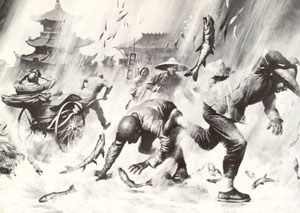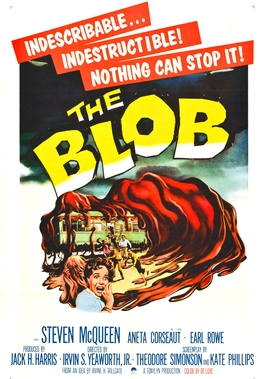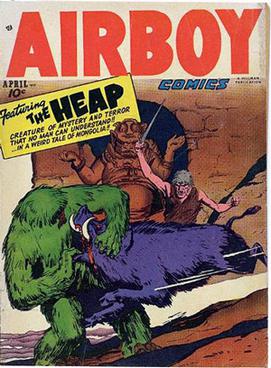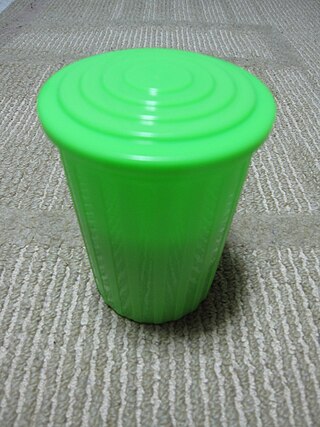
A frog is any member of a diverse and largely carnivorous group of short-bodied, tailless amphibians composing the order Anura. The oldest fossil "proto-frog" Triadobatrachus is known from the Early Triassic of Madagascar, but molecular clock dating suggests their split from other amphibians may extend further back to the Permian, 265 million years ago. Frogs are widely distributed, ranging from the tropics to subarctic regions, but the greatest concentration of species diversity is in tropical rainforest. Frogs account for around 88% of extant amphibian species. They are also one of the five most diverse vertebrate orders. Warty frog species tend to be called toads, but the distinction between frogs and toads is informal, not from taxonomy or evolutionary history.

A Boy and His Blob: Trouble on Blobolonia is a puzzle-platform game developed by Imagineering and published by Absolute Entertainment for the Nintendo Entertainment System (NES). The video game was released in North America in 1989, in Europe by Nintendo in 1991 and in Japan by Jaleco in 1991. A Boy and His Blob follows an unnamed male protagonist and his shapeshifting blob friend on their adventure to save the planet of Blobolonia from the clutches of an evil emperor.
A gelatinous cube is a fictional monster from the Dungeons & Dragons fantasy role-playing game. It is described as a ten-foot cube of transparent gelatinous ooze, which is able to absorb and digest organic matter.

The Kecksburg UFO incident occurred on December 9, 1965, at Kecksburg, Pennsylvania, United States, when a fireball was reported by citizens of six U.S. states and Canada over Detroit, Michigan, and Windsor, Ontario. Astronomers said it was likely to have been a meteor bolide burning up in the atmosphere and descending at a steep angle. NASA released a statement in 2005 reporting that experts had examined fragments from the area and determined they were from a Soviet satellite, but that records of their findings were lost in 1987. NASA responded to court orders and Freedom of Information Act requests to search for the records. The incident gained wide notoriety in popular culture and ufology, with speculation ranging from extraterrestrial craft to debris from the Soviet space probe Kosmos 96, and is often called "Pennsylvania's Roswell".

A rain of animals is a rare meteorological phenomenon in which flightless animals fall from the sky. Such occurrences have been reported in many countries throughout history. One hypothesis is that tornadic waterspouts sometimes pick up creatures such as fish or frogs, and carry them for up to several miles. However, this aspect of the phenomenon has never been witnessed by scientists.

The Blob is a 1958 American independent science fiction horror film directed by Irvin Yeaworth and written by Kay Linaker and Theodore Simonson. It stars Steve McQueen and Aneta Corsaut and co-stars Earl Rowe and Olin Howland. It was distributed by Paramount Pictures as a double feature with I Married a Monster from Outer Space.

The common toad, European toad, or in Anglophone parts of Europe, simply the toad, is a frog found throughout most of Europe, in the western part of North Asia, and in a small portion of Northwest Africa. It is one of a group of closely related animals that are descended from a common ancestral line of toads and which form a species complex. The toad is an inconspicuous animal as it usually lies hidden during the day. It becomes active at dusk and spends the night hunting for the invertebrates on which it feeds. It moves with a slow, ungainly walk or short jumps, and has greyish-brown skin covered with wart-like lumps.

Nostoc, also known as star jelly, troll’s butter, spit of moon, fallen star, witch's butter, and witch’s jelly, is the most common genus of cyanobacteria found in a variety of both aquatic and terrestrial environments that may form colonies composed of filaments of moniliform cells in a gelatinous sheath of polysaccharides. It may also grow symbiotically within the tissues of plants, providing nitrogen to its host through the action of terminally differentiated cells known as heterocysts. Nostoc is a genus that includes many species that are diverse in morphology, habitat distribution, and ecological function. Nostoc can be found in soil, on moist rocks, at the bottom of lakes and springs, and rarely in marine habitats. It may also be found in terrestrial temperate, desert, tropical, or polar environments.

The Green Slime is a 1968 tokusatsu science fiction film directed by Kinji Fukasaku and produced by Walter Manley and Ivan Reiner. It was written by William Finger, Tom Rowe and Charles Sinclair from a story by Reiner. The film was shot in Japan with a Japanese director and film crew, but with the non-Japanese starring cast of Robert Horton, Richard Jaeckel and Luciana Paluzzi.

Many works of fiction have featured UFOs. In most cases, as the fictional story progresses, the Earth is being invaded by hostile alien forces from outer space, usually from Mars, as depicted in early science fiction, or the people are being destroyed by alien forces, as depicted in the film Independence Day. Some fictional UFO encounters may be based on real UFO reports, such as Night Skies. Night Skies is based on the 1997 Phoenix UFO Incident.

The Heap is the name of several fictional comic book muck-monsters, the original of which first appeared in Hillman Periodicals' Air Fighters Comics #3, during the period fans and historians call the Golden Age of Comic Books. The Heap was comics' first swamp monster.

Slime was a toy product manufactured by Mattel, sold in a plastic trash can and introduced in February 1976. It consisted of a non-toxic viscous, squishy and oozy green or other color material made primarily from guar gum. Different variations of Slime were released over the years, including Slime containing rubber insects, eyeballs, and worms.

The toadstone, also known as bufonite, is a mythical stone or gem that was thought to be found in the head of a toad. It was supposed to be an antidote to poison and in this it is like batrachite, supposedly formed in the heads of frogs. Toadstones were actually the button-like fossilised teeth of Scheenstia, an extinct genus of ray-finned fish from the Jurassic and Cretaceous periods. They appeared to be "stones that are perfect in form" and were set by European jewellers into magical rings and amulets from Medieval times until the 18th century.

Tales from Space: About a Blob is a side-scrolling puzzle-platform game about a race of alien Blobs developed and published by DrinkBox Studios for the PlayStation 3 video game console. The game has a retro-inspired monster-movie art style and local co-op gameplay.
The Kentucky meat shower was an incident occurring for a period of several minutes between 11 a.m. and 12 p.m. on March 3, 1876, where what appeared to be chunks of red meat fell from the sky in a 100-by-50-yard (90-by-45-meter) area near Olympia Springs in Bath County, Kentucky. There exist several explanations as to how this occurred and what the "meat" was. Although the exact type of meat was never identified, various reports suggested it was beef, lamb, deer, bear, horse, or possibly human.

Nostoc commune is a species of cyanobacterium in the family Nostocaceae. Common names include star jelly, witch's butter, mare's eggs, fah-tsai and facai. It is the type species of the genus Nostoc and is cosmopolitan in distribution.
The 2012 UK meteoroid was an object that entered the atmosphere above the United Kingdom on Friday, 21 September 2012, around 11pm. Many news agencies across the UK reported this event.

The Winchcombe meteorite is a carbonaceous chondrite meteorite that was observed entering the Earth's atmosphere as a fluorescent green fireball over Gloucestershire, England, at 21:54 hours on 28 February 2021. Due to a public appeal, fragments were quickly recovered from the village of Winchcombe, enabling it to be collected for analysis before becoming degraded.


















